- Anthony D'Amico
- Albums and Singles
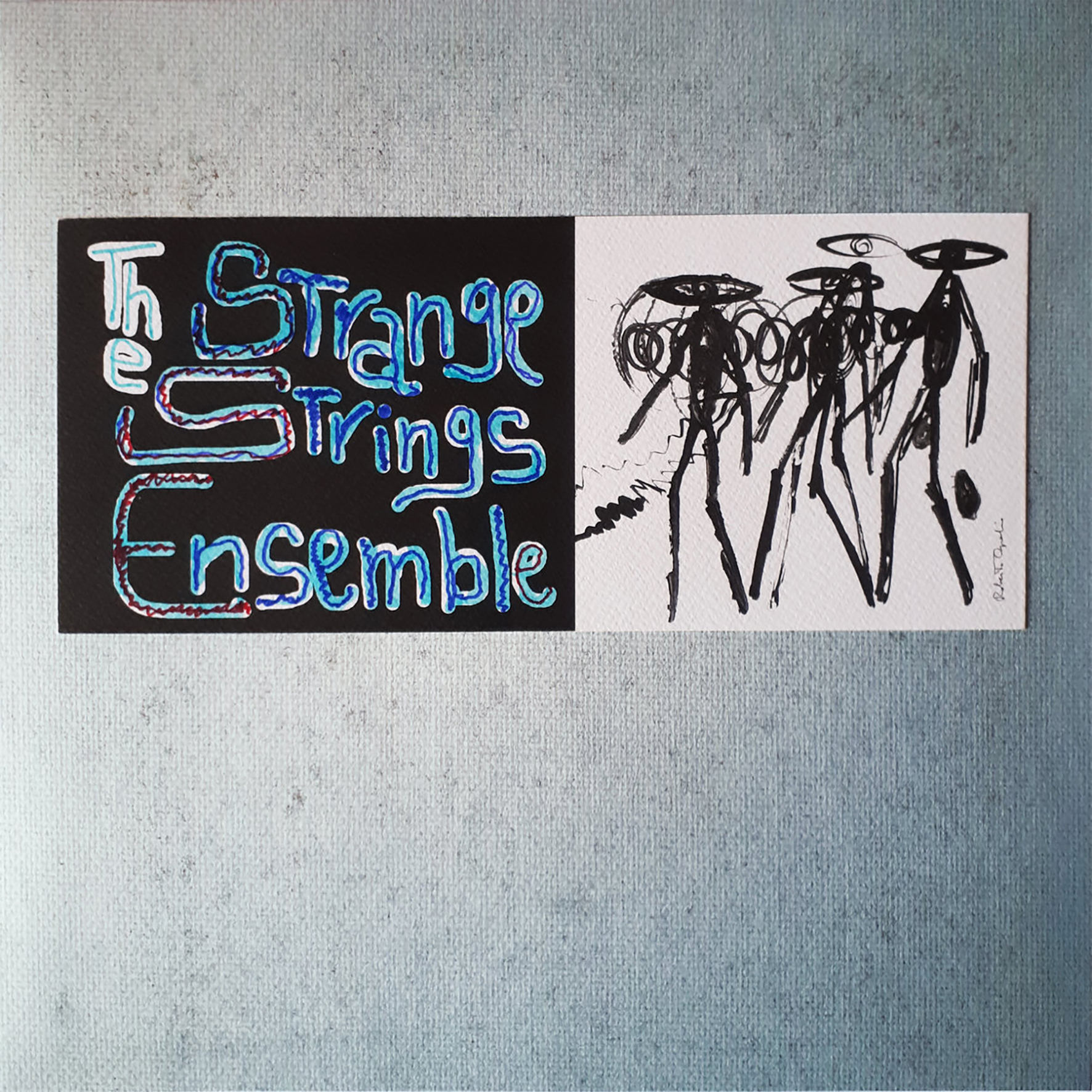 It fair to say that any album involving the Opalio brothers is destined to be memorably bizarre, but this Sun Ra-inspired EP takes My Cat is an Alien's vision even further out into fringes of outsider psychedelia than usual. For one, it is almost entirely acoustic, so there are no alientronics or psychotropic drones to be found and Roberto's queasily floating vocals seem (mostly) absent as well. Obviously, that eliminates nearly everything "familiar" about MCIAA's vision, so it makes a lot of sense to give this project a fresh name. In lieu of the expected alien terrain, the ensemble (rounded out by writer Philippe Robert & Joëlle Vinciarelli) "spontaneously composed" a visceral, churning, and jagged eruption using the "ancient, mostly ethnic, acoustic string instruments from Vinciarelli's vast collection." In keeping with the Sun Ra theme, the instruments were purposely untuned in homage to the late jazz icon's 1967 Strange Strings album, which Ra dubbed "a study in ignorance" (the Arkestra were given an eclectic array of oft-foreign string instruments that they did not know how to play). Unsurprisingly, critic Sean Westergaard's assessment of that polarizing Sun Ra opus is even more true of its spiritual heir: "If you don't like 'out,' stay clear of this one." I, however, am quite fond of "out," so I very much enjoyed this brief, singular, and synapse-frying detour.
It fair to say that any album involving the Opalio brothers is destined to be memorably bizarre, but this Sun Ra-inspired EP takes My Cat is an Alien's vision even further out into fringes of outsider psychedelia than usual. For one, it is almost entirely acoustic, so there are no alientronics or psychotropic drones to be found and Roberto's queasily floating vocals seem (mostly) absent as well. Obviously, that eliminates nearly everything "familiar" about MCIAA's vision, so it makes a lot of sense to give this project a fresh name. In lieu of the expected alien terrain, the ensemble (rounded out by writer Philippe Robert & Joëlle Vinciarelli) "spontaneously composed" a visceral, churning, and jagged eruption using the "ancient, mostly ethnic, acoustic string instruments from Vinciarelli's vast collection." In keeping with the Sun Ra theme, the instruments were purposely untuned in homage to the late jazz icon's 1967 Strange Strings album, which Ra dubbed "a study in ignorance" (the Arkestra were given an eclectic array of oft-foreign string instruments that they did not know how to play). Unsurprisingly, critic Sean Westergaard's assessment of that polarizing Sun Ra opus is even more true of its spiritual heir: "If you don't like 'out,' stay clear of this one." I, however, am quite fond of "out," so I very much enjoyed this brief, singular, and synapse-frying detour.
Opax/Elliptical Noise/Up Against the Wall, Motherfuckers!
This album is the result of two different collaborations that unexpectedly and happily converged into one, as the Opalios and Robert worked together on the recently published Free Jazz Manifesto, which is a compendium of "must-have classics" and "indispensable curiosities" from that adventurous, forward-thinking milieu. Naturally, Saturn's most famous son is featured therein, so Sun Ra's wildest and most outré moments were likely something that the Opalios were revisiting and consciously thinking about around the time that Eternal Beyond II was being recorded at Vinciarelli's studio. Consequently, it made perfect sense to pull in Robert (a non-musician) for a spirited tribute to Sun Ra's classic study in ignorance. The scraping, scrabbling, and sawing cacophony that ensued calls to mind a post-apocalyptic junkyard band armed with little more than a broken grandfather clock, a piano soundboard strung with rusted barbed wire, and some metal files. That ragged and squealing maelstrom is arguably anchored by some looped, wordless vocals from Vinciarelli and a pulsing pedal tone for a while, but it ultimately becomes an untethered runaway train of heaving, churning, and squealing intensity. Fans of sharp, metallic harmonics take note, as this album is very much for you. While I suspect One for Ra is not intended as a major release given that the whole convulsing and screeching mindfuck barely lasts 17 minutes, that duration feels just about right for such a gleefully challenging and dissonant free-form firestorm. Sun Ra would be proud.
Samples can be found here.
Read More
- Anthony D'Amico
- Albums and Singles
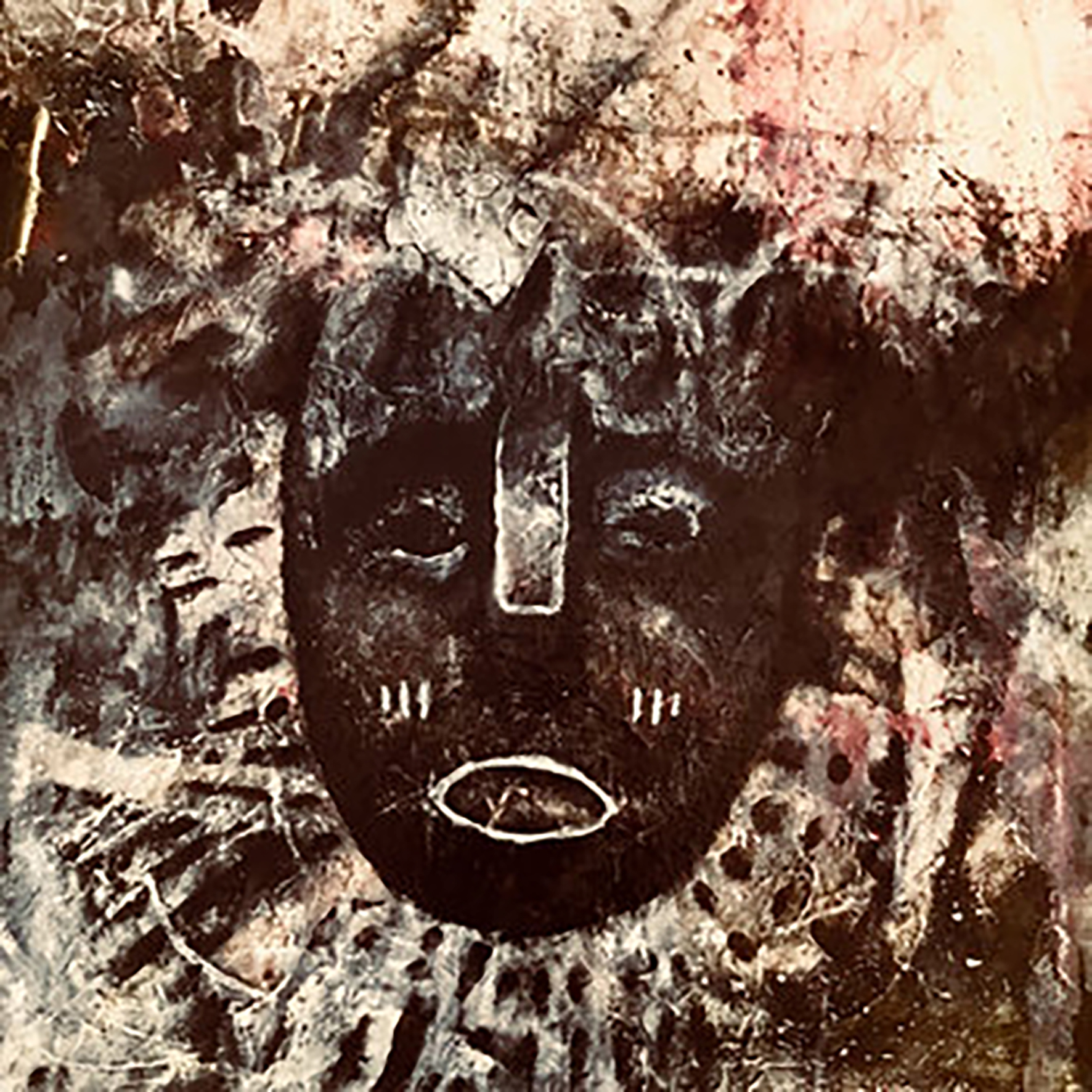
This singular album was released back in February 2020 right before the pandemic upended everything, so I sadly never got around to writing about it. I am attempting to right that wrong now, however, as this inscrutable and anonymous Texas duo is the most consistently fascinating psych project around and this album has been in fairly heavy rotation for me since it came out. Granted, "consistently fascinating" is not quite the same thing as "consistently great," but Totemist is an unusually accessible release for the creepily costumed pair, as this vinyl debut ostensibly "marks a new direction" for the project. That mostly just means that these "fourth world post-colonial cultural cannibalists" wrote a more melodic and focused batch of songs than usual and took a break from "the oppressively lo-fi sound" of their previous tapes. Happily. all of those changes suit the band quite well, but Ak'Chamel still basically sound like a haunted, shambling pile of Sun City Girls and Sublime Frequencies albums that has been possessed by the spirit of an ancient shaman. Which, of course, is exactly how I would want them to sound.
It is impossible to speculate on the identity of Ak'Chamel without instantly thinking of the Bishop brothers, as Totemist feels like a perfect blend of Sir Richard's Eastern-influenced guitar virtuosity and the warped vision and dark humor of Alvarius B. Also, Sublime Frequencies regulars Robert Millis and Mark Gergis are both explicitly involved. Case closed! That said, if the Bishops are behind Ak’Chamel, it only raises more questions ("so why was Ak’Chamel briefly a black metal band?" being one that springs to mind). In any case, Totemist would have made a truly killer follow up to Funeral Mariachi regardless of who was involved, as Ak’Chamel are legitimately quite good at making droning, Middle Eastern-inspired desert psychedelia. The real magic of the album, however, lies in how those perfectly good desert-psych jams regularly dissolve like a mirage to reveal something considerably darker, weirder, and more hallucinatory. At various points, Totemist calls to mind heavy trance-inducing harmonium drones, a wrong-speed field recording of an ancient tribal ritual, a chorus of sinister puppets, a cannibalized Phurpa album, and a fever dream about an all-Muppet mariachi band. Needless to say, it is a hypnotically creepy and surreal journey indeed, but considerably less nightmarish than some of the duo's previous releases (parts of which would seem perfectly at home in an evidence bag labeled "Dyatlov Pass Incident" or an alternate reality where The Blair Witch was actively involved in the early 2000s cassette underground). There are admittedly still some traces of that dark and murky terrain here, but Totemist is wonderful largely because of how effortlessly and organically the two poles of the bands' vision bleed into each another like an increasingly malfunctioning reality simulation. If I had to choose a favorite song, I would go with the colorfully titled "The Funeral of a Woman Whose Soul is Trapped in the Sun" or "Phallus Palace," but Totemist's phantasmagoric vision quest is best experienced as a sustained immersion.
Samples can be found here.
Read More
- Anthony D'Amico
- Albums and Singles
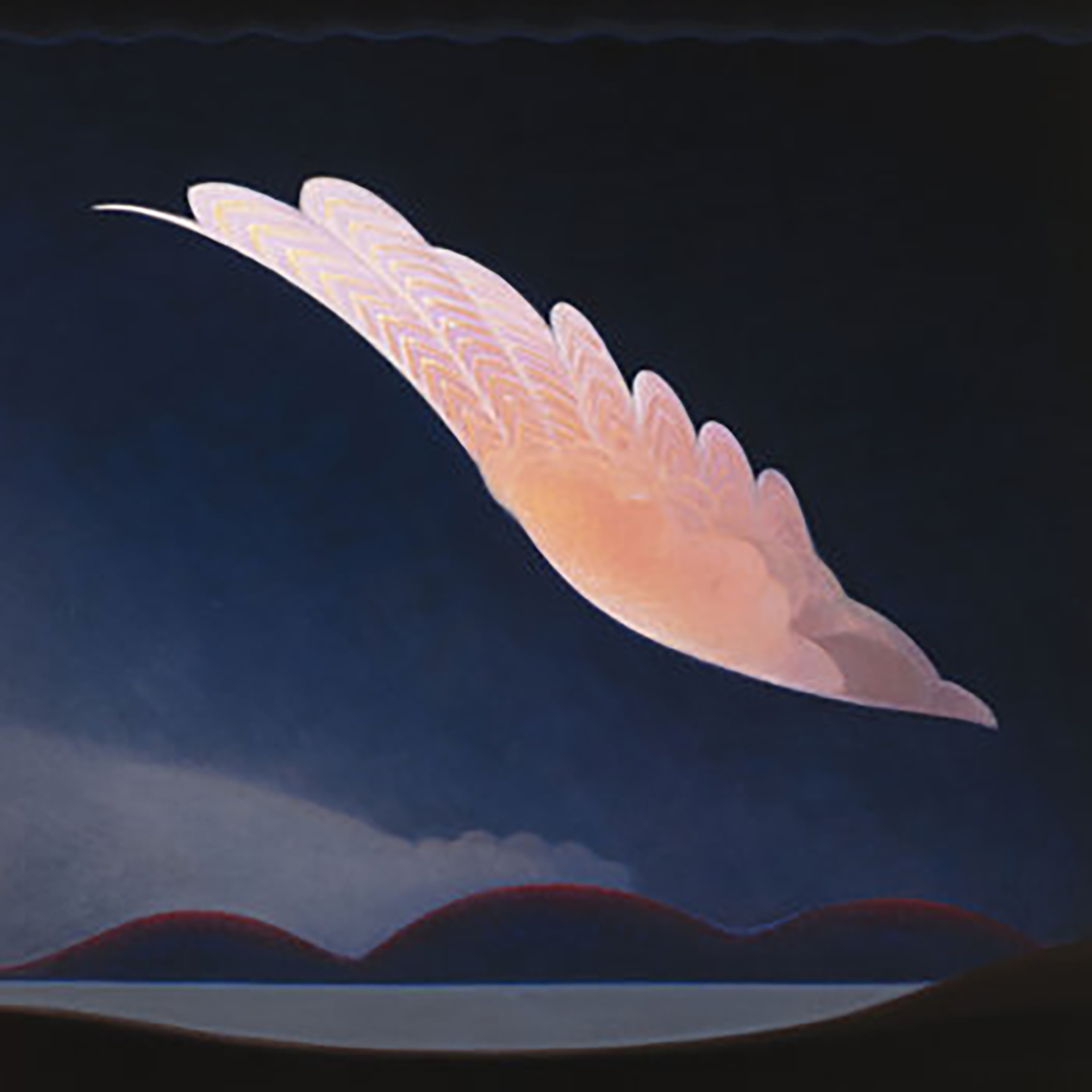
At this point in his career, each new Dean McPhee release feels like a legitimate event, as he surfaces quite rarely and always hits me with at least one absolutely stunning piece when he does. Consequently, this review could probably be condensed to merely "Dean McPhee has a new album," as that would convey everything necessary to perk up the ears of most people already familiar with his body of achingly beautiful, slow-burning guitar magic. Unsurprisingly, Witch's Ladder does nothing to dash those dauntingly high expectations, as it picks up right where 2017's Four Stones left off and that one was a very strong contender for McPhee’s finest album. And now Witch's Ladder is a strong contender for that honor as well. Beyond that, the only salient details are that the cover art comes from visionary symbolist painter Agnes Pelton and that the album's second half is a near-perfect two-song run of hauntingly sublime beauty.
Hood Faire
Given his association with the Folklore Tapes milieu, McPhee's unusual choice of cover art is not a surprise, but it is a telling detail that provides some insight into what he seems to be reaching towards with his own work. When reading The Whitney's description of last year's Pelton exhibition, I was repeatedly struck by phrases like "meditative stillness," "shimmering veils of light," and "awareness of a world that lay behind physical appearances." All of those phrases are apt for the five songs of Witch's Ladder as well, but McPhee admirably finds an ingenious array of ways to get there. That said, the pieces do all share a rough foundational aesthetic of "fingerpicked 'folk music' played on an electric guitar," though each either ultimately builds into something considerably more transcendent or blossoms into quietly beautiful psychedelia in the margins. All are excellent and feature emotively smoldering or lyrically melodic solos at their core, but the most interesting twists occur in the final three pieces (in ascending order of brilliance, no less). In "Red Lebanese," for example, the winding and languorously smoke-like melody fitfully evokes a trippy synth spiraling off into space, while "Eksdale Path" unexpectedly coheres into a killer "dual-guitar harmony" passage. As much as I love "Eksdale Path," however, it is immediately eclipsed by the epic closer, as "Witch's Ladder" is basically three songs' worth of killer ideas seamlessly blended into one. In fact, I had not even finished typing "sounds like the twin-guitar attack of classic Iron Maiden just dropped by for a surprisingly tasteful cameo" before it turned into a hallucinatory duel between intertwining forwards and backwards guitar melodies (or at least a convincing illusion of it). It is a characteristically mesmerizing bit of show-stealing slow-motion sorcery, but the show already quite wonderful beforehand, as there truly is not a single wasted note on this album. Witch's Ladder is another instant classic from Dean McPhee.
Samples can be found here.
Read More
- Eve McGivern
- Albums and Singles
 Part of Ulrich Schnauss's musical history is building layers of beautiful electronic imagery, both within his solo work and partnering with others. Schnauss is paired up once again with Danish recording and mastering engineer Jonas Munk, member of space rockers Causa Sui and half of the ambient chill-out duo Billow Observatory. These two equally talented creators produce a lush mélange of extraordinarily hypnotic dreamscapes on Eight Fragments Of An Illusion. Rich kosmische textures, vibrant guitar, and concentrated layers of electronic atmosphere make for an engaging ride, especially when experienced on headphones.
Part of Ulrich Schnauss's musical history is building layers of beautiful electronic imagery, both within his solo work and partnering with others. Schnauss is paired up once again with Danish recording and mastering engineer Jonas Munk, member of space rockers Causa Sui and half of the ambient chill-out duo Billow Observatory. These two equally talented creators produce a lush mélange of extraordinarily hypnotic dreamscapes on Eight Fragments Of An Illusion. Rich kosmische textures, vibrant guitar, and concentrated layers of electronic atmosphere make for an engaging ride, especially when experienced on headphones.
The third release from the duo expands upon the more restrictive electronic melodies prevalent in the previous efforts, providing for an expansion of musical interplay and greater emotional depth. The previous collaborations leaned heavily towards Causa Sui-style rock rhythms supported by a '90s analog synth template. Eight Fragments moves beyond this mold, bursting forth with glistening textures, consisting of a satisfying interplay of shimmering guitars, awash in ambient synthesizer, evocative melodies spurred by motorik rhythms. "Asteroid 2467" is the album's ear-catching opening, a heart-swelling piece that ebbs and flows like a wave, drawing out and back into the bright and exuberant "Return To Burlington." The majority of the tracks function like independent stories (hence, fragments) over the album's entirety, evoking mental imagery through practiced waves of sounds and layered instrumentation. My personal favorite, "Perpetual Motion," can easily take its rightful place in the immense catalog of classic Kosmische rock; every nook and cranny of the nearly 11 minutes bursts with gemütlichkeit, a pure feeling of warmth and contentment, and filled with diverse ear ticklers. Every fragment here is magical, easily listened to individually but making up a single illusion. "Polychrome" seals the illusion with a choir of cosmic voices, fading into silence to entrance again. Time to repeat.
Sound samples can be found here.
Read More
- Creaig Dunton
- Albums and Singles
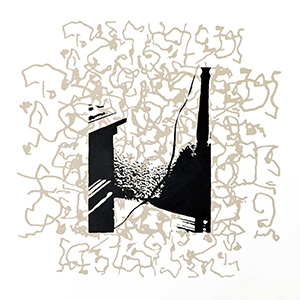 Founded as a band in Omaha, Nebraska in 1998, Naturaliste's first release in over 15 years is certainly a drastic departure from the local, improvised shows the group was responsible for. Rather than those frequent, though often dubiously captured recordings, Temporary Presence is not only a highly quality document of fully realized artistry, but also a document of where the band is so many years later.
Founded as a band in Omaha, Nebraska in 1998, Naturaliste's first release in over 15 years is certainly a drastic departure from the local, improvised shows the group was responsible for. Rather than those frequent, though often dubiously captured recordings, Temporary Presence is not only a highly quality document of fully realized artistry, but also a document of where the band is so many years later.
Almost Halloween Time/Gertrude Tapes/Public Eyesore/Unread Records
The band, consisting of Bryan Day, Christopher Fischer, Charles LaReau, and L. Eugene Methe have mostly departed the Midwest, with recordings captured in Omaha, Beijing, Oakland, Pittsburgh, and Shanghai brought in by all four artists comprising a significant portion of Temporary Presence. The record's title not only references the nature of these often found/incidental recordings, but also that the remainder of the album was recorded by the quartet within a rented musical instrument shop in Shanghai.
The result is six pieces of music that encompass a bit of everything sonically, from identifiable, played instruments, to abnormal processing, and a bit of unidentifiable field recordings and ambiguous chaos. The piano and oddly pitched bells/chimes on "The Swallows Have Returned" contrast the rattling vibrations and hard to define noises here and there. Combining expansive spaces to chaotic electronics and slightly rhythmic knocking it is certainly dense, but never feels formless or unstructured. "At the Worst of It" is similar in its piano paired with noise, but the voices (and the monstrous treatments to them) makes it a different matter altogether.
The group turns up the creepy factor on "It's Just the Air Conditioner," which minimizes the howling expansive sound and treated guitar that appear. Compared to other pieces on the record the sound is more streamlined overall, and perhaps that focus is what makes it eerie overall. The mood is similar on "Vitals," which is heavily reverberated pulsing electronics. Mixing in a heavily treated guitar (or bass), knocking objects, and what could be an electronic piano here and there, and the sense of mystery borders on malignancy.
One of the characteristics I found most captivating about Temporary Presence is the way Naturaliste combines the use of instruments that were obviously recorded in a group/combo setting with the far more ambiguous processing and recordings done independently. It is an excellent balance of identifiable layers with the mysterious that at times might seem like pure chaos on the surface, but a deeper listen indicates a clearer sense of unity from all four performers.
Read More
- Creaig Dunton
- Albums and Singles
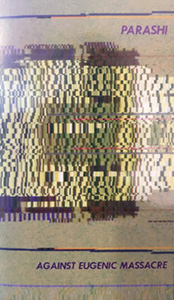 Mike Griffin, as Parashi, is one of the most prolific noise artists in the upstate New York region, both on his own and in collaborations with others, such as John Olson (as Spykes) and Noise Nomads. Against Eugenic Massacre features him doing what he does best: a murky combination of psychedelic electronics, incidental rhythms, and mysterious ambiences that perfectly balances between harsh experimentation and complex environments.
Mike Griffin, as Parashi, is one of the most prolific noise artists in the upstate New York region, both on his own and in collaborations with others, such as John Olson (as Spykes) and Noise Nomads. Against Eugenic Massacre features him doing what he does best: a murky combination of psychedelic electronics, incidental rhythms, and mysterious ambiences that perfectly balances between harsh experimentation and complex environments.
Right from the first moments of "(No Consequence for) Glacier Burner," Griffin's artistry is obvious. Opening from a mass of ray gun pulses and crunchy fragments that vaguely imitate a rhythm, that blend of sci-fi electronics and organic textures are clearly on display. Shifting the mix to the occasional open, haunted space, erratic outbursts o what sounds like helicopters and off-kilter pitched tones add to the cavernous mystery of sound. With "Glacier Burner" covering the bulk of the A side of the tape, the brief "Klangermann" almost resembles a coda with its brevity and subtle mix of unidentifiable sounds and manipulated cassette tapes.
On the other side, "Rats in Paradise" is at first a blend of echoing loops and stuttering clicks that could almost be a woodpecker adding the foundation to which Griffin builds. Layer by layer he constructs a denser mix, adding layers over a ghostly, drifting backdrop. Fuzzy squalls and squeaks appear, but the obscurity of sounds and processing give a bit of menace to the work. With some weird buzzing and less distorted tones appearing towards the end, the mood lightens near the conclusion. For the concluding "Ingress" though, Griffin brings things back into the haunted house via random knocking and clattering sounds bathed in reverb and filtering. Static waves and swells in sound, and what almost could be a horn of some sort end the tape perfectly.
Parashi has always exceeded my expectations with every new release, and Against Eugenic Massacre is yet another example of this. Abstraction and weirdness always abounds, but there is a complexity and nuance to his work that sets it apart from being just "noise." Another great Parashi tape, and an excellent release from the newly established Half-a-Million Records, (the house label for Belltower Records in North Adams, Massachusetts and one of the top record stores in the region).
Read More
- Duncan Edwards
- Albums and Singles
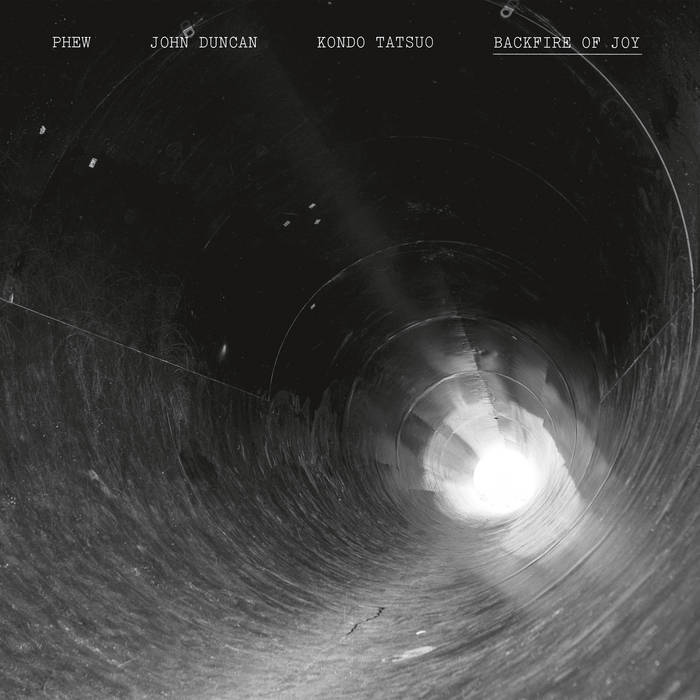 This short release captures the only performance from the trio. Recorded at Hosei University, Tokyo, on John Duncan’s first visit to Japan in 1982, it is a fascinating document both in the context of that visit but also in terms of the creativity, emotion, technique, and improvisation. The participants are meeting here for the first time, although they were familiar with each other’s work through tape exchange. Duncan is finding and processing shortwave radio signals, Tatsuo using piano, tape loops, and synth textures, and Phew vocalizing in English and Japanese. 
This short release captures the only performance from the trio. Recorded at Hosei University, Tokyo, on John Duncan’s first visit to Japan in 1982, it is a fascinating document both in the context of that visit but also in terms of the creativity, emotion, technique, and improvisation. The participants are meeting here for the first time, although they were familiar with each other’s work through tape exchange. Duncan is finding and processing shortwave radio signals, Tatsuo using piano, tape loops, and synth textures, and Phew vocalizing in English and Japanese. 
Black Truffle
On the first of two pieces, "Backfire," the group plunges straight into a tense section dominated by percussive tape loops and Phew’s hybrid chant-song. The effect is of a woman plodding around in metal boots and tinkering on a broken stylophone while absentmindedly reading aloud the labels of electronic appliances. Yet she is actually offering up a kind of liturgy “I already sold you… an electric plug, an electric bell, an electric cooker, an electric kettle, an electric toothbrush, an electric knife...don’t let me sell you... an electric chair.” If this is a serious message against consumerism or the death penalty then the paradoxical mundane glamor in the charming tone and rhythm of her voice elevates it far above dull moralizing. Around the seven minute mark comes a halt and bare smattering of applause gives way to a more mournful flow, with chiming and buzzing synth melodies. Then Phew switches to Japanese and the abrasiveness ratchets up in a thumping swirling climax.
“Backfire" is the more gritty and dissonant of the two pieces but the creative extemporization holds together very well. Pearls are made by grit, and the second, slightly shorter, “Joy” has a soothing and ecstatic atmosphere and more breathing space for the music. There is a wonderful feel to this track, and Duncan’s spluttering bursts of shortwave noise provide perfect contrast to elegaic singing and echoing piano notes. A slightly over-the-top comparison would be stalactites dropping into a moonlit pool of molten silver. Phew manages to sound as if she’s singing backwards.
The tape exchange meant these collaborators will have had an idea of what the others would bring to the performance, but it is intriguing to wonder if some of the audience knew of Duncan's previous events and expected to be challenged by upsetting or confrontational elements. To describe him as notorious would (still) be a massive understatement. It is arguable that this recording only exists because of his self-exile from the USA. He had acquired a reputation for transforming his personal experience into disturbing art and also using disturbing art to trigger transforming personal experiences in others. I refer in particular to the 1980 performance combining two separate but linked events: an audio recording of Duncan allegedly having sex with a cadaver (which he’d obtained by bribing a mortuary assistant in Mexico) and projected photographs of his later vasectomy, presented to a Los Angeles audience as Blind Date - a depiction of male rejection turning into rage and self-punishing loathing. This work made his earlier Scare from 1976, wherein people answered their door to be confronted by a figure (Duncan) in a head mask, pointing and firing a blank-loaded gun in their face before fleeing, seem relatively benign. Blind Date provoked a backlash of such fierce critical and personal opinion that two years later Duncan relocated to Japan as something of a cultural leper.
Backfire of Joy occurred as Duncan was deliberately submerging himself into a new country and the alienating effects of a foreign language. A creative dialogue works here, though, with Phew and Tatsuo at least equal partners in the trio. The record can be enjoyed without an understanding of how Duncan's upbringing and personal history affected his art. Equally, the event did not rely on Reichian breathing exercises or rather “hyperventilation used to create a complete loss of physical and psychic control" or the need for an audience to confront or dissolve the personal armor preventing us from getting in touch with our true nature. That’s just as well, as I won’t be shedding my armor any time soon - at least not the visor and codpiece.
Samples can be found here.
Read More
- Administrator
- Albums and Singles
SISTERS WITH TRANSISTORS is the remarkable untold story of electronic music's female pioneers, composers who embraced machines and their liberating technologies to utterly transform how we produce and listen to music today.
The film maps a new history of electronic music through the visionary women whose radical experimentations with machines redefined the boundaries of music, including Clara Rockmore, Daphne Oram, Bebe Barron, Pauline Oliveros, Delia Derbyshire, Maryanne Amacher, Eliane Radigue, Suzanne Ciani, and Laurie Spiegel.
The history of women has been a history of silence. Music is no exception.
As one of the film's subjects, Laurie Spiegel explains: "We women were especially drawn to electronic music when the possibility of a woman composing was in itself controversial. Electronics let us make music that could be heard by others without having to be taken seriously by the male dominated Establishment."
With the wider social, political and cultural context of the 20th century as our backdrop, this all archival documentary reveals a unique emancipation struggle, restoring the central role of women in the history of music and society at large.
With Laurie Anderson as our narrator, we'll embark on a fascinating journey through the evolution of electronic music. We’ll learn how new devices opened music to the entire field of sound, how electronic music not only changed the modes of production but in its wide-ranging effects also transformed the very terms of musical thought.
SISTERS WITH TRANSISTORS is more than just the history of a music genre: it's the story of how we hear and the critical but little-known role female pioneers play in that story.
More information can be found here.
Read More
- Anthony D'Amico
- Albums and Singles

Anne Guthrie's third album for Students of Decay continues her trend of significantly transforming her vision with each new release, though the arc of her albums does consistently suggest an increasing aversion to conventional structure and musicality. In practical terms, that means that Gyropedie was primarily assembled from field recordings, though Guthrie's French horn does make a few ghostly and well-timed appearances. Notably, the sounds that Guthrie collected are entirely diaristic in nature ("quite literally a record of pilgrimage from East to West"), as she recorded and collaged a host of ephemeral and meaningful moments from her move from New York to California (birds, crunching snow, instruments that she had to sell, etc.). As Guthrie wryly notes in the album description, she found herself "becoming an impressionist." I heartily concur and believe that approach suits her work remarkably well. Given the deliberately abstract and elusive nature of the material, it took me a bit longer to become drawn into Gyropedie than it did for Guthrie's previous releases, but the album's second half contains some of the most tender, distinctive, and quietly beautiful work that she has yet recorded.
The opening "Threading A Closed Loop" is a bold and interesting way to introduce the album, as it slowly rolls in like a mysterious fog of ambient outdoor sounds, plinking strings, distant woodpeckers, murmured voices, bees, and an occasional strangled sound from Guthrie's French horn. It is frankly about as understated and impressionistic as an album can get, but it does gradually cohere into something quite intriguing and evocative (I especially like the part where it sounds like the bees bought a distortion pedal). The following "Hill, Mountain" undergoes a similar trajectory, initially sounding like someone fumbling with a microphone while a woman recites poetry over a distorted radio, but eventually it blossoms into an enigmatic scene that seems to capture the time-stretched sounds of a train passing through a gently hallucinatory landscape of singing birds and metallic drones. I believe the "broken synth" mentioned in the album description makes an appearance as well. Both it and its predecessor are subtly beautiful in their own ways, yet my favorite pieces are the ones that follow. In "Variation on Coral," Guthrie paints a lovely seaside scene, as a slow, lovely French horn melody lazily unfolds over a backdrop of gently gurgling and lapping waves, lysergically smeared chimes, cooing vocals, and a host of other curious sounds. The closing "The Goldbeater’s Skin," on the other hand, sounds like a duet between a quietly plinking and fitfully operational music box and a lovelorn French horn player in a particularly bittersweet mood, but it is further enlivened by an evocative array of breath-like textures and wounded-sounding squeaks and warbles. To my ears, it is unquestionably Gyropedie's most lovely and memorable piece, as the unexpectedly poignant horn melody feels like the beating heart of the album finally being revealed, yet it would not make nearly the same impact without the languorous and dreamlike journey beforehand. Granted, Gyropedie is an album that demands some patience and attentive listening to reveal its full beauty, but its fragile and tender fantasia of memory fragments is well served by that steadily deepening immersion.
Samples can be found here.
Read More
- Anthony D'Amico
- Albums and Singles
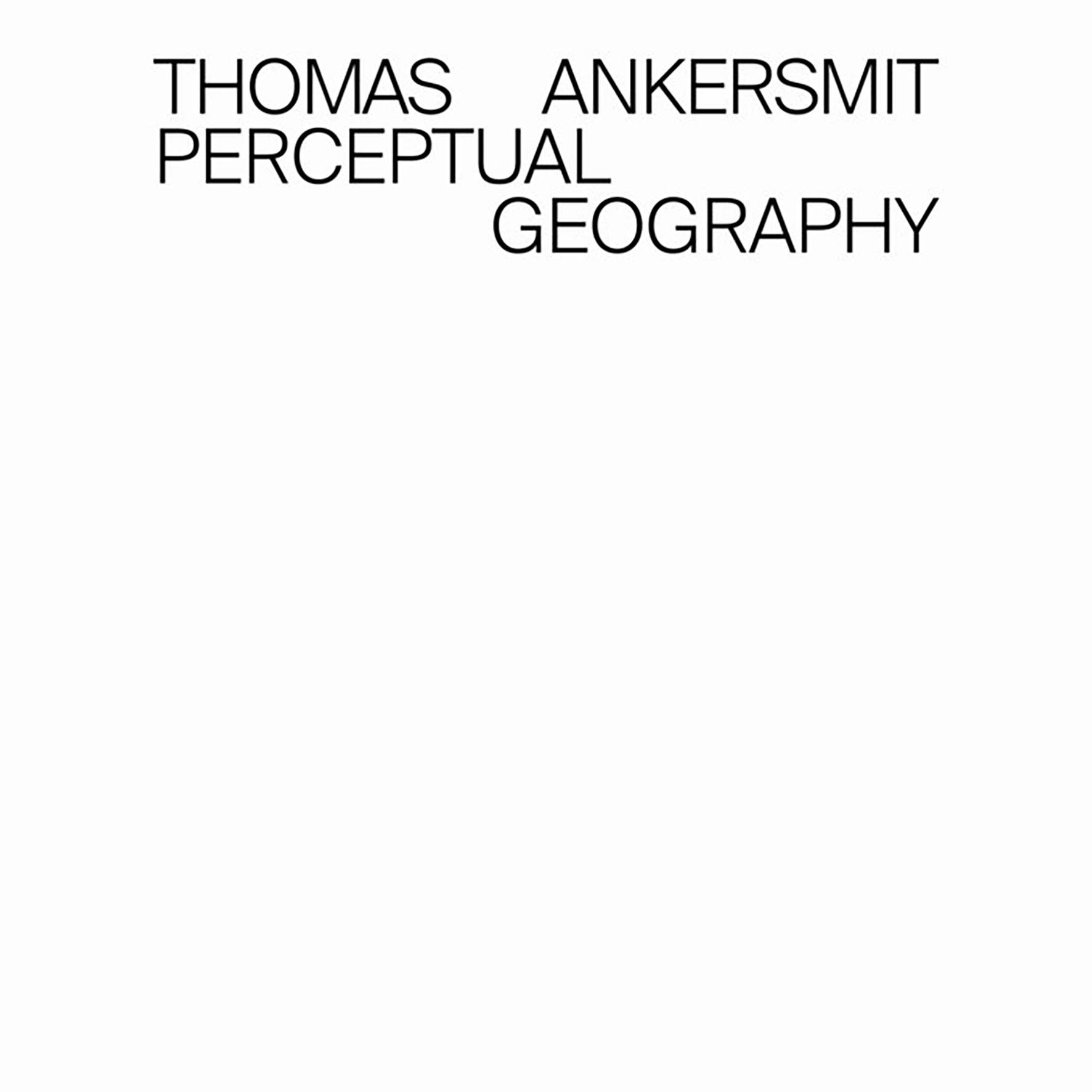 Three years after the mesmerizing Homage to Dick Raaijmakers, Thomas Ankersmit is back with yet another bombshell inspired by an underappreciated electronic music visionary. In this case, that visionary is Maryanne Amacher, who also happens to be the person who fatefully introduced Ankersmit to his Serge modular synth. Naturally, the Serge retains its central role from the Raaijmakers album and Ankersmit masterfully wields it again to conjure up another hallucinatory swirl of phantom sounds and strange aural phenomena. The conceptual themes are bit different this time around, however, as Ankersmit explores the ideas laid out in Amacher's "Psychoacoustic Phenomena in Musical Composition: Some Features of a Perceptual Geography" essay. Unsurprisingly, Ankersmit does a stellar job psychoacoustically mapping out his own compelling perceptual geography with this release, but his most striking bit of sorcery actually occurs off the album, as the piece was engineered to trigger otoacoustic emissions, which are "sounds emanating from inside the head, generated by the ears themselves."
Three years after the mesmerizing Homage to Dick Raaijmakers, Thomas Ankersmit is back with yet another bombshell inspired by an underappreciated electronic music visionary. In this case, that visionary is Maryanne Amacher, who also happens to be the person who fatefully introduced Ankersmit to his Serge modular synth. Naturally, the Serge retains its central role from the Raaijmakers album and Ankersmit masterfully wields it again to conjure up another hallucinatory swirl of phantom sounds and strange aural phenomena. The conceptual themes are bit different this time around, however, as Ankersmit explores the ideas laid out in Amacher's "Psychoacoustic Phenomena in Musical Composition: Some Features of a Perceptual Geography" essay. Unsurprisingly, Ankersmit does a stellar job psychoacoustically mapping out his own compelling perceptual geography with this release, but his most striking bit of sorcery actually occurs off the album, as the piece was engineered to trigger otoacoustic emissions, which are "sounds emanating from inside the head, generated by the ears themselves."
The album fades into existence with a quietly oscillating electronic hum that gradually becomes increasingly disrupted by squelches, blurts, crackles of static, swells of feedback, and something resembling shortwave radio transmissions. That is admittedly not radical territory for a vintage modular synth album, yet each sound feels like a meaningful building block that incrementally moves the composition closer and closer to one of Ankersmit's beguiling set pieces. The first of those starts taking shape around the 9-minute mark, eventually reaching a crescendo that sounds like asteroids slowly smashing into the hull of my spaceship while I fight off a swarm of psychedelic crickets. Things only get wilder and more intense from there, as the simmering brew of abstract electronic sounds repeatedly blossoms into striking new forms, at times even resembling a killer noise guitar act. The first truly "wow" moment hits around the 16-minute mark, as a haze of beeps, buzzes, and other squiggling and squirming electronic sounds starts to feel like it is actually burrowing into my goddamn mind. That is a hell of a trick, as the piece seems to transform as I turn my head from side to side. I suspect the live experience is even more transcendent, as Ankersmit always "tunes his instrument to the resonant characteristics of the performance space, so that the sounds activate the structure." He clearly takes the physics of sound very seriously and it pays off beautifully. Naturally, there are more dazzling climaxes as the album unfolds, including one that starts forming around the 26-minute mark in which Ankersmit sounds like the best damn noise artist on the planet. I easily could throw around some more colorful terms describing what transpires ("lysergic space aviary" and "gibbering, squelching cacophony" spring to mind), but the only thing that matters is that Perceptual Geography contains some of the most challenging, absorbing, and masterfully executed sound art that I have ever heard.
Samples can be found here.
Read More
- Anthony D'Amico
- Albums and Singles
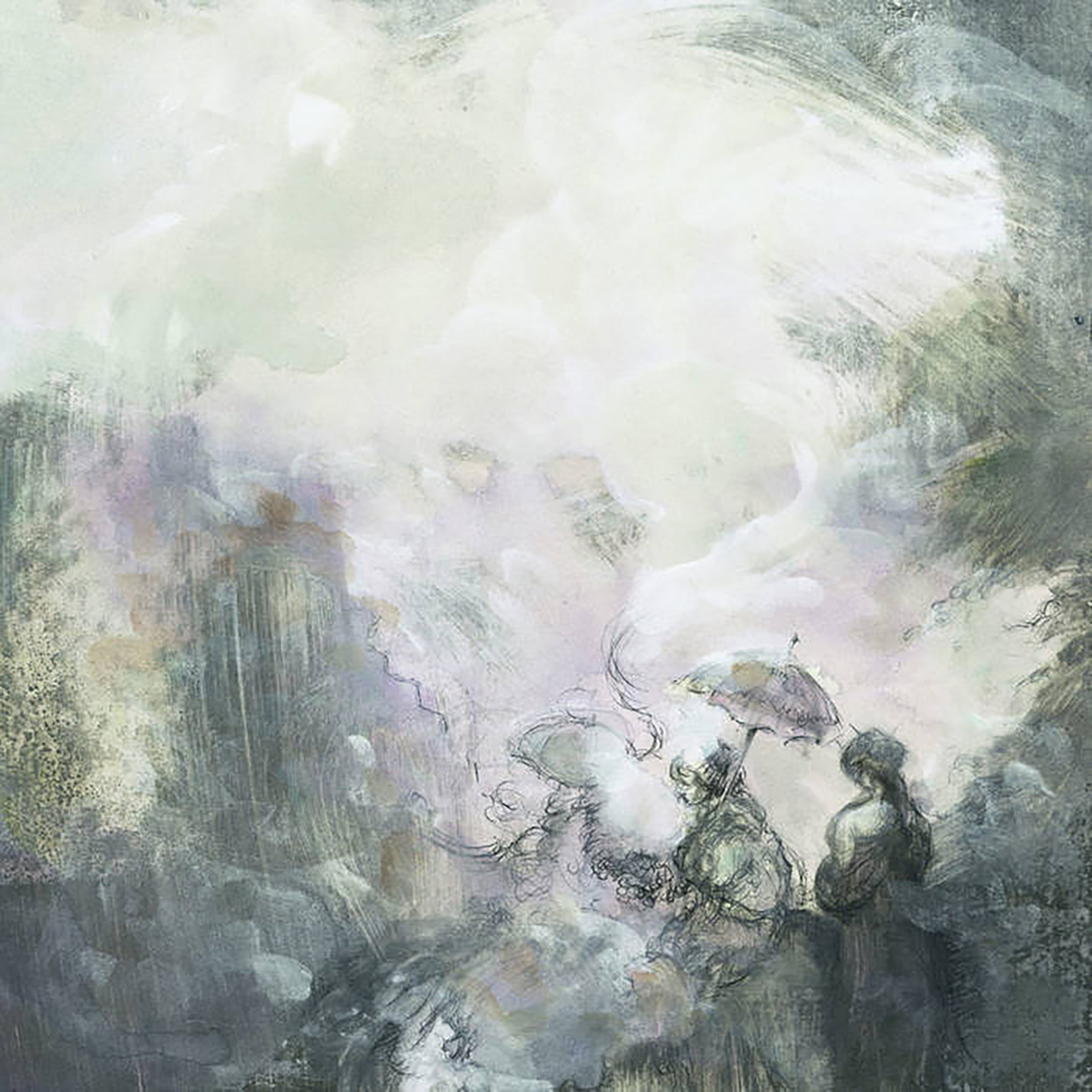 Newly reissued on vinyl (and digitally) with beautiful new artwork, Paradise Lost was originally released as a cassette back in 2019. As is the norm for many Chalk releases, additional details beyond the fact that it exists are quite thin, but this one takes that to an amusing extreme, as the Discogs entry for the original cassette notes "label and artist name are not listed on the release." That said, I believe I can say with moderate certainty that these two longform pieces were recorded on an 8-track reel-to-reel between 2016 and 2018 and that Chalk primarily played a synthesizer. Also, his Ghosts on Water bandmate Naoko Suzuki contributed some very well-hidden vocals and created the artwork for the original tape. To some degree, it makes sense that this album originally surfaced as a very limited-small run tape, as it does not feel like one of Chalk's more significant opuses, but it is quite an enjoyable and interesting release nonetheless. In fact, the title piece feels like legitimately prime Andrew Chalk material to me, though I suspect many longtime fans will be more fascinated by the surprising and divergent "This Pendent World."
Newly reissued on vinyl (and digitally) with beautiful new artwork, Paradise Lost was originally released as a cassette back in 2019. As is the norm for many Chalk releases, additional details beyond the fact that it exists are quite thin, but this one takes that to an amusing extreme, as the Discogs entry for the original cassette notes "label and artist name are not listed on the release." That said, I believe I can say with moderate certainty that these two longform pieces were recorded on an 8-track reel-to-reel between 2016 and 2018 and that Chalk primarily played a synthesizer. Also, his Ghosts on Water bandmate Naoko Suzuki contributed some very well-hidden vocals and created the artwork for the original tape. To some degree, it makes sense that this album originally surfaced as a very limited-small run tape, as it does not feel like one of Chalk's more significant opuses, but it is quite an enjoyable and interesting release nonetheless. In fact, the title piece feels like legitimately prime Andrew Chalk material to me, though I suspect many longtime fans will be more fascinated by the surprising and divergent "This Pendent World."
One interesting bit of information that I stumbled upon while researching this album was a blurb from Daisuke Suzuki's Siren Records noting that this album "strongly recalls the atmosphere of home recording in the '80s." I got exactly the same impression myself from the opening "This Pendent World," as I had scribbled down that it felt like a duel between two very different artists from the golden age of private press New Age: one kosmische-inspired synth wizard hellbent on taking me to space and another guy who just wants to lull me into a blissful, bucolic reverie with some pretty string swells. There are also some traces of a third guy who closely resembles contemporary Andrew Chalk, as there is a loose melodic theme of wobbly, liquid tones likely originating from an electric piano. While that is certainly an odd collision to encounter on a Milton-themed Andrew Chalk record, it works surprisingly well, amiably and amorphously drifting and curling like a trail of smoke. The following "Paradise Lost" is similarly form-averse, but in a much more compelling way, as its frayed and smeared swells of warm synth tones feel teasingly just out of focus. Additionally lurking within the artfully blurred dream-fog are a slow-motion tumble of acoustic guitar fragments, ghostly traces of Naoko's lovely singing, and probably some pedal steel too. I am tempted to make a wince-inducing pun on the album title here, but "Paradise Lost" is simply too beautiful of a piece to deserve such an indignity, vividly evoking the slowly streaking and shifting colors of an especially gorgeous sunset.
Samples can be found here.
Read More